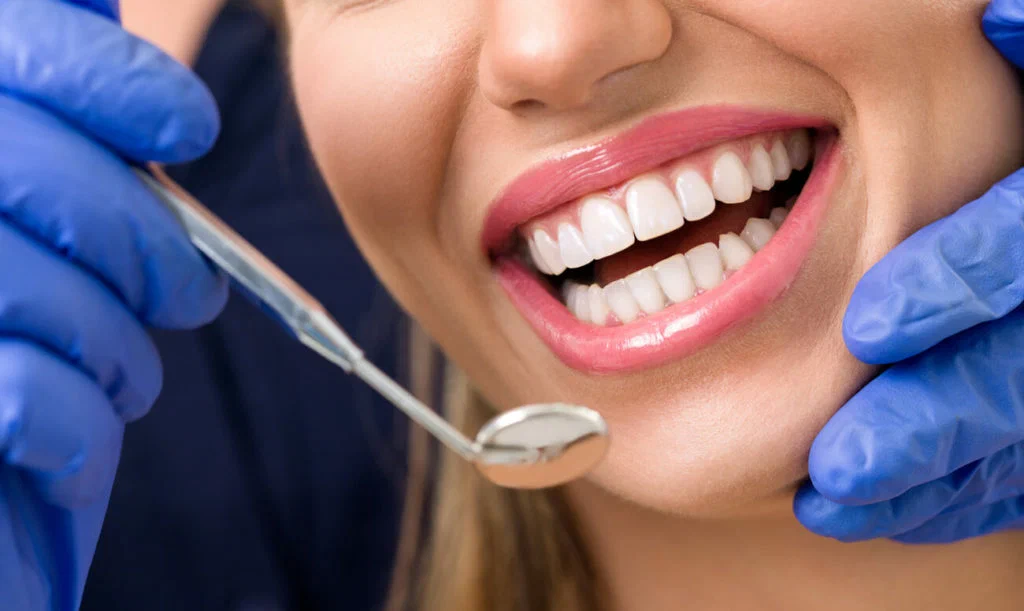- +917892951808
- Indiranagar, Bangalore
Best Dental Clinic In Bangalore Indiranagar | Best Dentist in Bangalore Indiranagar
- Home
- About Us
- Treatments
- Dental Services
- Laser Assisted Treatments
- Endodontic Treatments
- Digital Dentistry
- Invisalign® braces
- LANAP
- WPT
- LANAP vs WPT
- Low Level Laser Therapy
- Dental Bridges
- Dental Crown
- Dentures
- Dental Implants
- Digital Smile Design
- Gentle Ray – Dental Caries-Diagnosis
- Full Mouth Rehabilitation
- Invisible Orthodontics – Clear Path
- Dental Treatment Costs in Bangalore
- Blog
- Contact Us
- Request Appointment
Digital Dentistry

Digital Dentistry in Bangalore
Digital dentistry refers to the integration of digital technology into dental practices,
encompassing the entire workflow from diagnosis and treatment planning to
execution. This approach enhances precision, efficiency, and communication,
ultimately improving patient outcomes.
Introduction to Digital Dentistry
As a dental professional, I’ve witnessed the remarkable transformation of the industry
through the advent of digital dentistry in Bangalore. This innovative approach has revolutionized the way
we diagnose, plan, and deliver dental treatments, offering patients a more efficient, accurate,
and personalized experience. Here, we’ll delve into the inner workings of digital dentistry,
exploring its advantages and key technologies.
Digital Dentistry and Scanning Equipment
In the field of dentistry, digital scanners are divided into various types based on their usage, location, and method: in dental clinics, with the patient, or in dental laboratories, without the patient present. Dental scanners used in clinics fall under two categories: CBCT and intraoral scanners. Dental Cone beam CT (CBCT) scanners are primarily used for taking
X-rays of the oral region, while intraoral scanners or dental 3D scanners replace the traditional impression technique where patients are required to hold impression material in their mouth to obtain accurate results. These two types of scans can be combined, for instance, in cases where complete denture treatment is needed. The process of creating intraoral scans involves the use of polygons and can be enhanced
by incorporating images captured by an intraoral camera. This generates a lifelike 3D representation of the patient’s teeth on a computer, enabling dentists to identify even the
tiniest issues and flaws that may go unnoticed by the human eye. Certain scanners are capable of detecting early stages of tooth decay, aiding in its prevention and progression.
Dental laboratory scanners are capable of scanning a physical area and creating a 3D
representation. However, instead of capturing the real-time situation in the mouth, they scan
dental models or physical impressions of teeth and gums. This allows for additional steps
such as processing, correction, and production. In the following section, we will discuss the
integration of various hardware and software in the standard scanning process for digital
dentistry.
Digital Dentistry and the Role of CAD/CAM Technology
Computer-aided design (CAD) and computer-aided manufacturing (CAM) software is
used to describe the entire process from intraoral scanning to creating a digital dental
design, milling or printing, and final implementation in the mouth. This procedure can be
completed in as little as 40 minutes and allows for single-visit treatment. Studies have
shown that incorporating CAD/CAM solutions, including scanning and the use of dental
design software, can improve treatment precision, speed, cost-effectiveness, and reduce
patient burden.
The use of technology in dental procedures
The digital workflow in dentistry may vary based on the issue, its complexity level, the
required treatment, and any complicating factors. However, unlike conventional workflows,
digital technology can greatly enhance accuracy, automation, speed, and collaboration
between different disciplines.
Regardless of the treatment type being indicated, the standard digital dental workflow will
always follow a three-step process:

Scanning or capturing digital impressions.
This step is the only one that
the patient can see, as it involves capturing their dentition. While a digital
workflow can begin with a traditional impression that is later digitized in the
lab, it would be preferable for the patient to have their impression taken
with an intraoral scanner. During this stage, the patient will immediately be
able to view a 3D image of their teeth on the screen, as the process
typically only takes 2-3 minutes.
Treatment planning and design.
In this phase, dentists or dental
experts utilize CAD/CAM software to create plans for restorations and other
treatments. Through incorporating feedback from the patient or laboratory,
the design or treatment plan can be quickly adjusted or improved.
Manufacturing of products.
Once digital designs have been approved,
they can be transmitted to dental 3D printers or milling machines to
produce various appliances such as aligners, retainers, dentures, crowns,
bridges, splints, indirect bonding trays, or any other restorative products
needed for the patient. At this stage in the digital dental process, the
patient will return (or may still be in the chair) to receive or begin their
treatment.
Diagnosis: Digital Diagnostic Tools

RVG Digital X-Ray
- Provides immediate, high-resolution images
- Reduces radiation exposure compared to traditional X-rays
- Enhances diagnostic accuracy and aids in better treatment planning
3D CBCT Scan (Cone Beam Computed Tomography)
- Produces 3D images of dental structures, soft tissues, nerve paths, and
bone - Essential for detailed diagnosis and planning in complex cases like implant placement
Intraoral Photographs
- Captures detailed images of teeth and gums
- Useful for patient records, case documentation, and patient education
These digital diagnostic tools are vital for accurate diagnosis and effective treatment
planning, leading to more predictable and successful outcomes.
Treatment for Orthodontic Issues using Digital Technology
Digital orthodontic care technologies have revolutionized the way dentists are able to
address issues with misaligned teeth, jaws, and bite patterns. While traditional methods
like panoramic X-rays and manual examinations have their limitations, they can still be
used in conjunction with digital dental scanners for more precise impressions.
The utilization of 3D computer imaging in digital orthodontics allows for the creation of an
intricate representation of the teeth and bites from various viewpoints, enabling the selection
of optimal placements for braces, invisible aligners, and other devices.
The use of digital models in orthodontics has the added benefit of saving a significant
amount of time during the design, manufacturing, and transportation process. This is
because the treatment appliance can now be created in-house, eliminating the need for
clinics to create plaster casts, which not only take up space but can also be susceptible to
damage during transportation.
The utilization of digital impressions in orthodontic treatments offers advantages for patients,
as it eliminates the need for them to endure unpleasant and sticky materials and spend long
periods of time in a dental chair.
The applications of the orthodontic digital workflow involve the use of various solutions for
the following purposes:
-
Adjusting and relocating teeth that are too close together or too far apart.
-
Improving the alignment of the bite.
-
Replacing any missing teeth.
-
Fixing any abnormalities in the growth of teeth.



Advantages of Digital Dentistry
The integration of digital technologies in dentistry has brought about a host of benefits that
are improving patient outcomes and enhancing the overall efficiency of dental practices.
Some of the key advantages of digital dentistry include:
-
Improved Accuracy : Digital imaging and computer-aided design (CAD) tools provide dentists with a more precise understanding of a patient's oral anatomy, enabling them to develop customized treatment plans and deliver more accurate restorations.
-
Enhanced Efficiency : Digital workflows streamline various dental procedures, from initial diagnosis to final restoration, reducing chair time and improving the overall patient experience.
-
Increased Patient Comfort : Many digital dentistry techniques, such as intraoral scanning, are more comfortable and less invasive for patients compared to traditional methods.
-
Better Collaboration : Digital dentistry facilitates seamless communication and collaboration between dentists, dental technicians, and other healthcare providers, leading to more coordinated and comprehensive care.
-
Reduced Errors : The integration of digital technologies helps minimize human errors, ensuring more consistent and predictable treatment outcomes.
How Digital Dentistry Works
At the core of digital dentistry is the integration of various technologies
that work together to enhance the delivery of dental care. Let's explore
the key components that make up this innovative approach:
Computer-Aided Design (CAD) in Dentistry
Computer-aided design (CAD) software plays a crucial role in digital dentistry. Dentists use
CAD tools to create virtual models of a patient’s teeth, gums, and other oral structures,
enabling them to design customized restorations, aligners, and other dental appliances with
precision.
Computer-Aided Manufacturing (CAM) in Dentistry
Once the digital design is complete, computer-aided manufacturing (CAM) technologies,
such as milling machines and 3D printers, are used to fabricate the final dental restorations
or appliances. This streamlined process ensures a better fit and a more natural-looking
result for the patient.
Intraoral Scanners in Digital Dentistry
Intraoral scanners are a crucial component of digital dentistry, as they allow dentists to capture highly accurate, three-dimensional digital impressions of a patient’s teeth and gums.
These digital impressions eliminate the need for traditional, messy impression materials,
providing a more comfortable experience for the patient.
3D Printing in Dentistry
The integration of 3D printing technology in digital dentistry has opened up new possibilities
for customized dental restorations, surgical guides, and even the fabrication of dental
models and appliances. This additive manufacturing process allows for the creation of
precise, patient-specific dental products.
These digital diagnostic tools are vital for accurate diagnosis and effective treatment
planning, leading to more predictable and successful outcomes.
